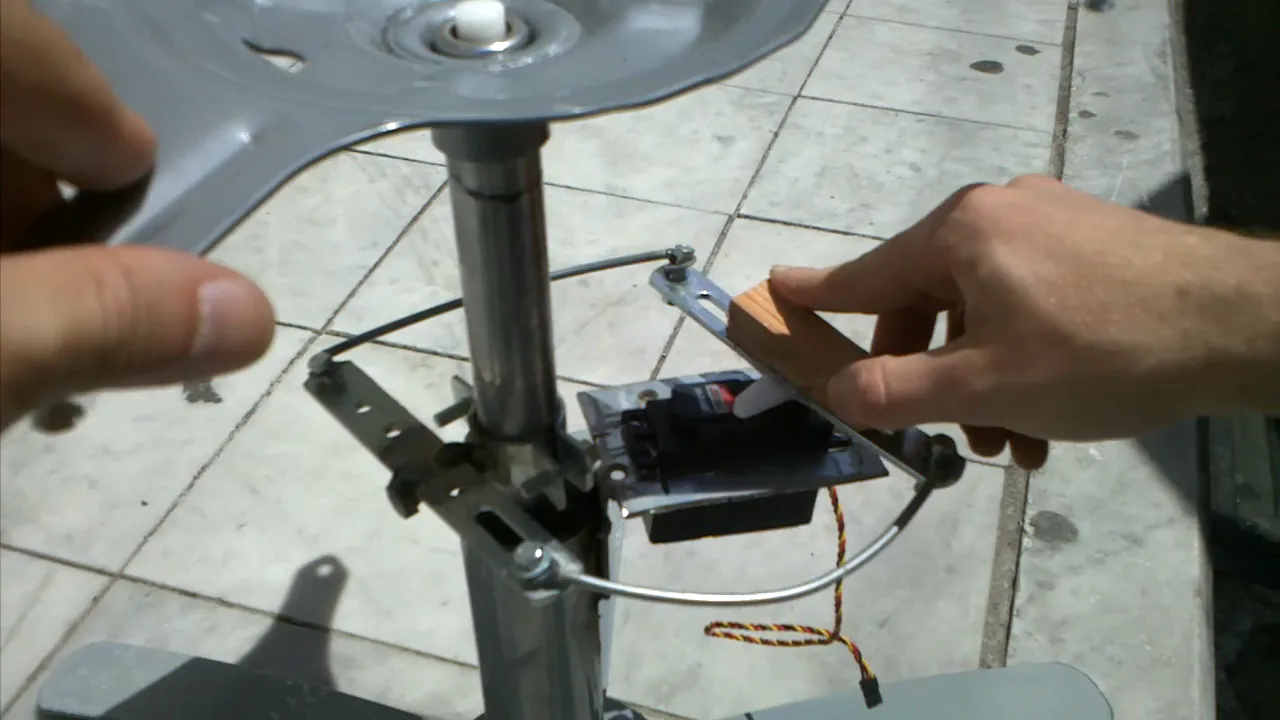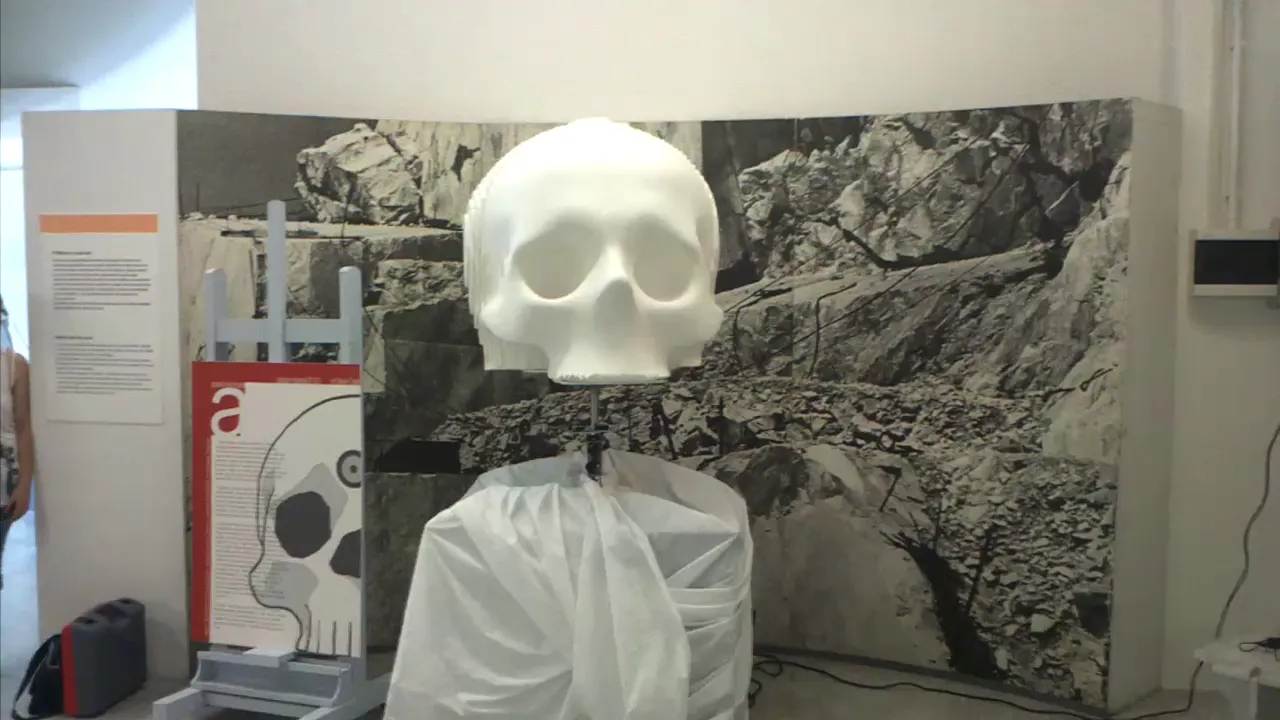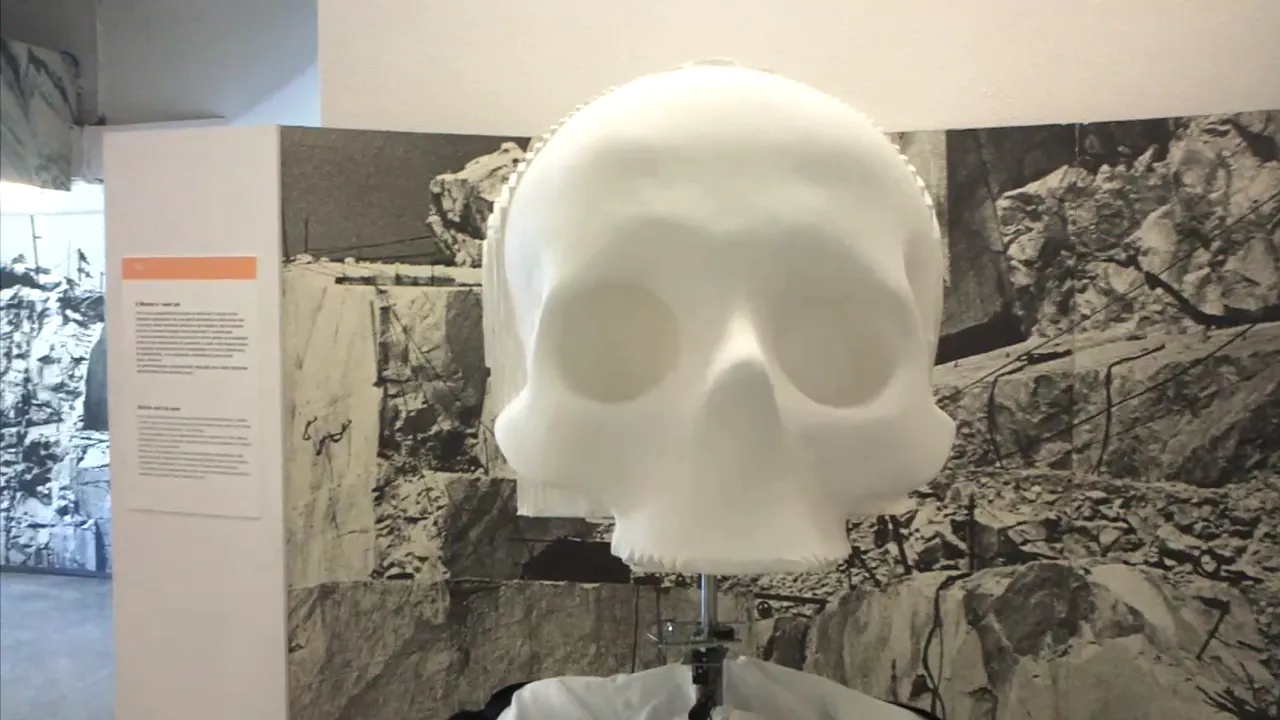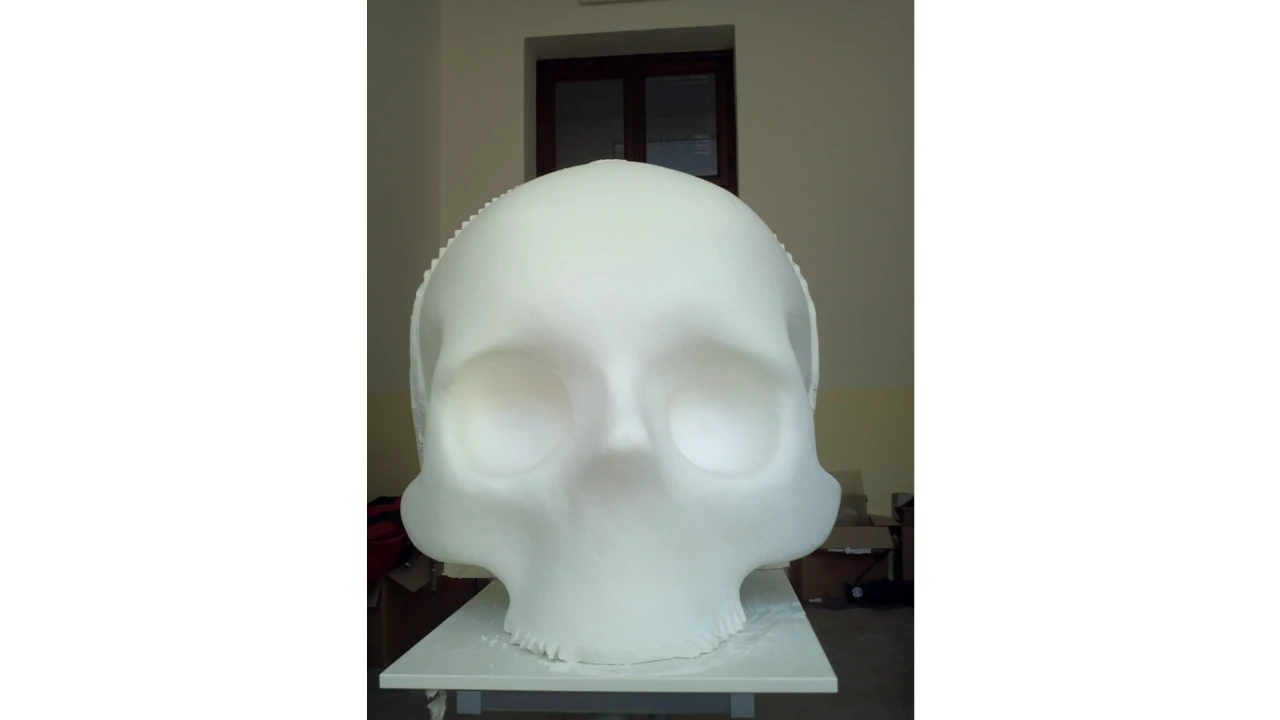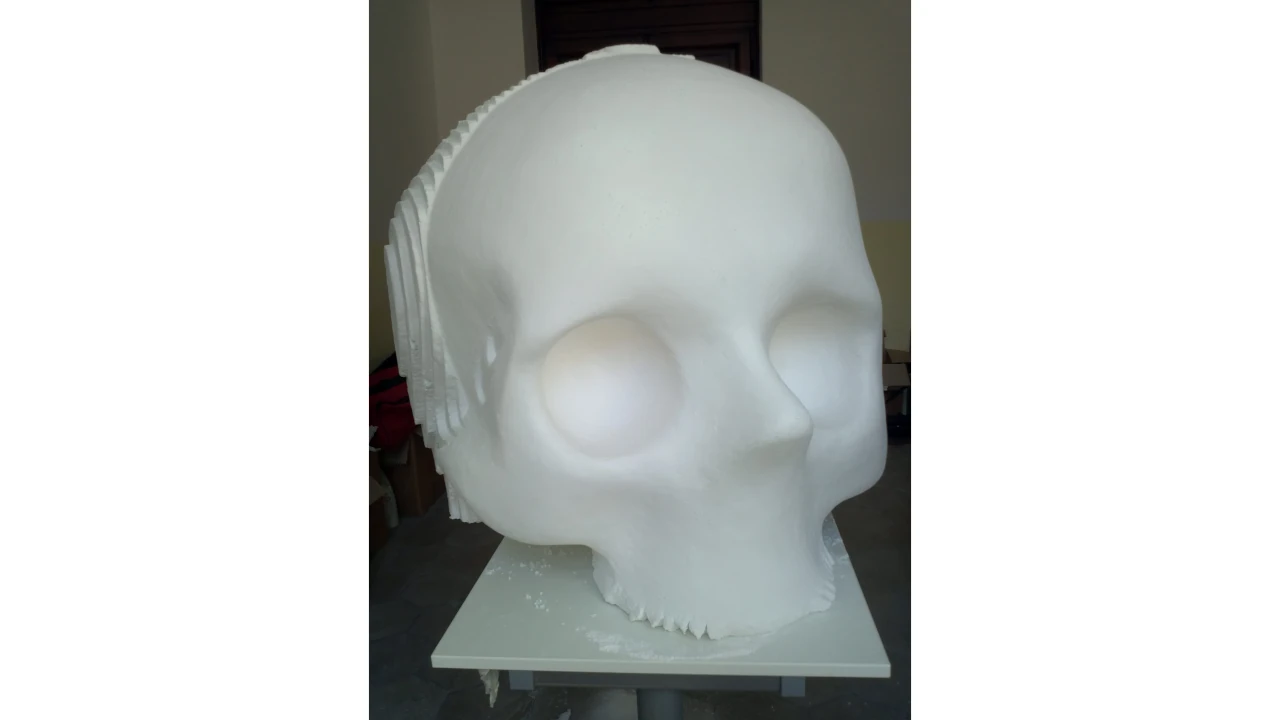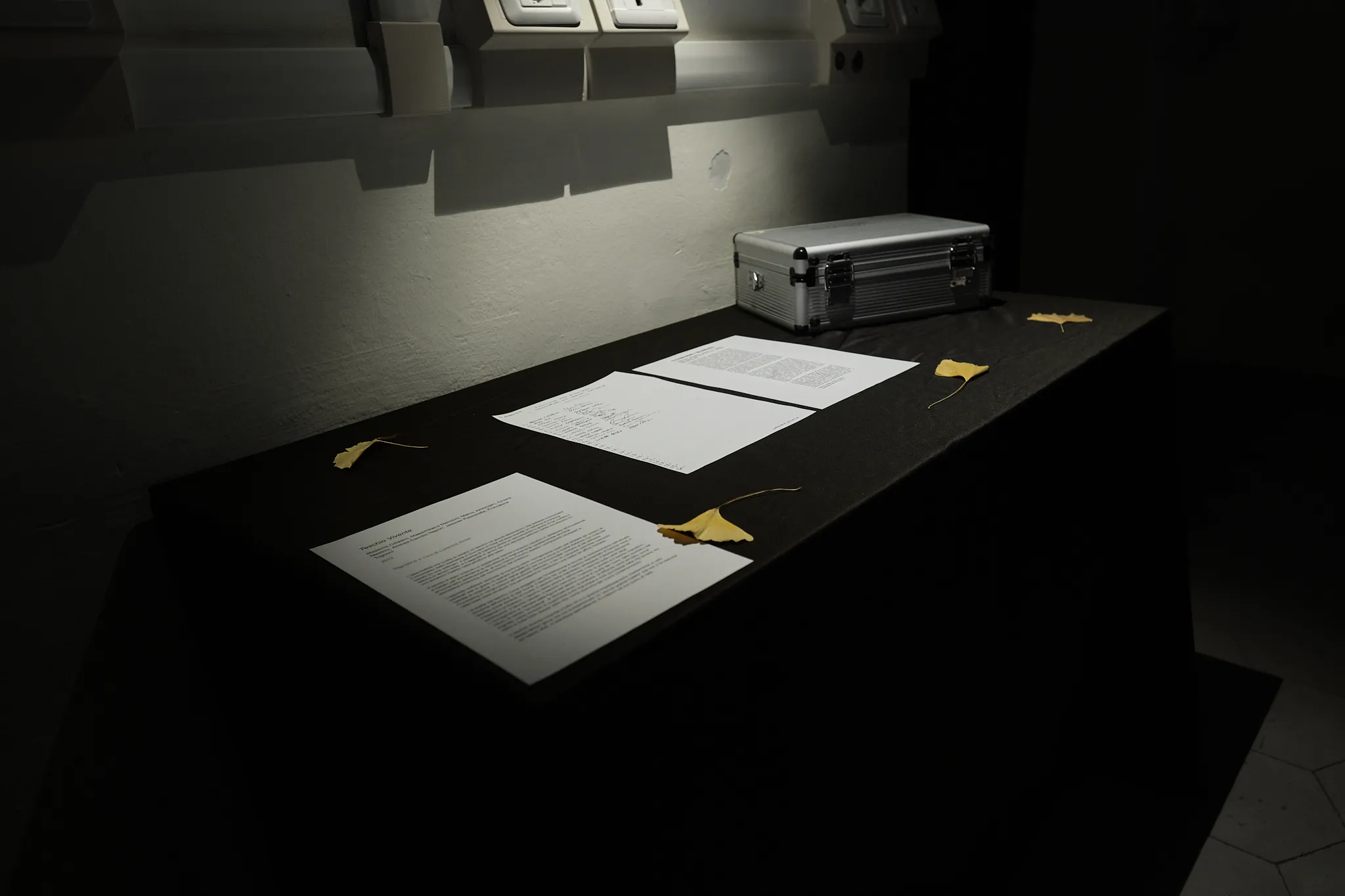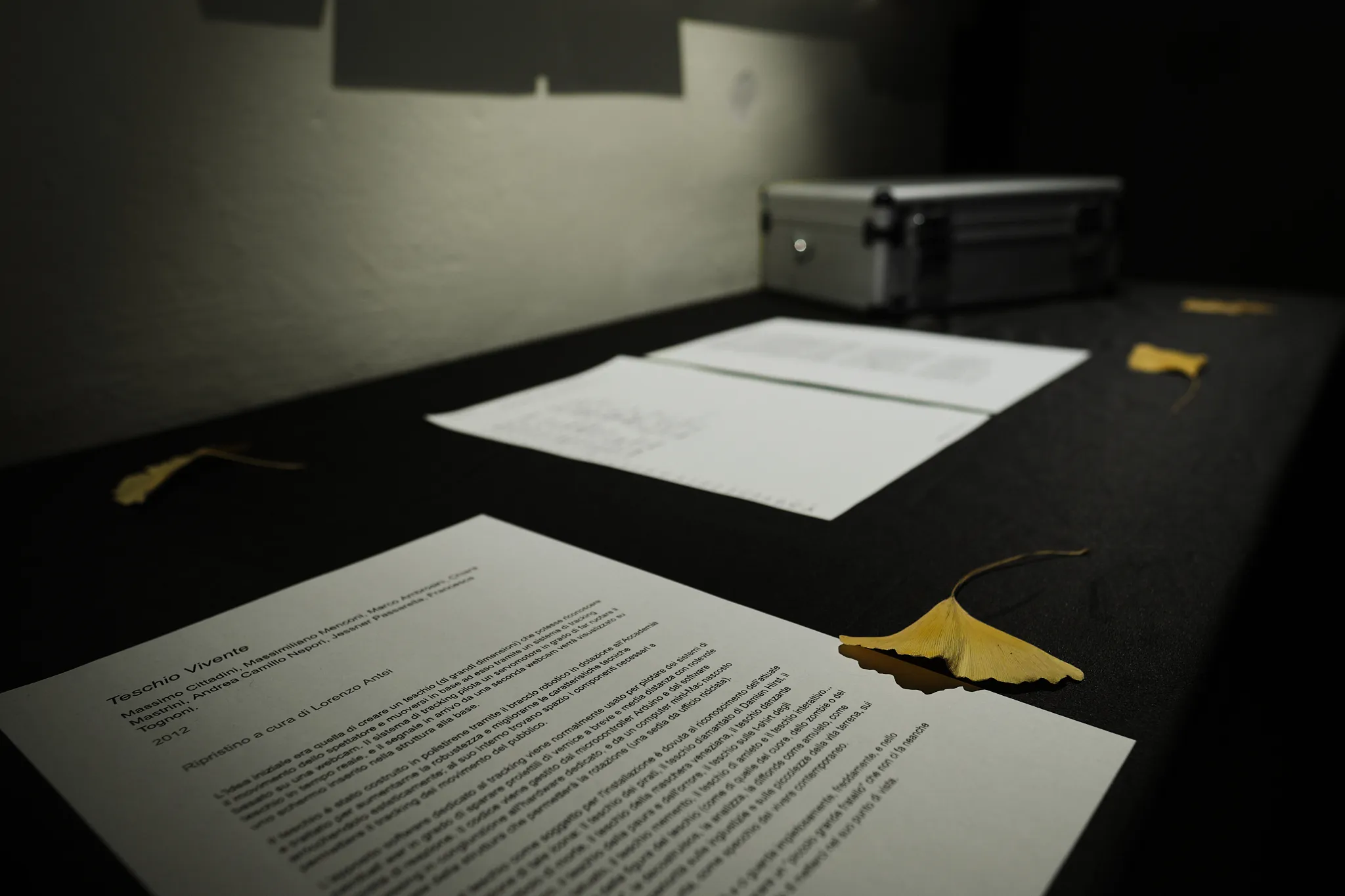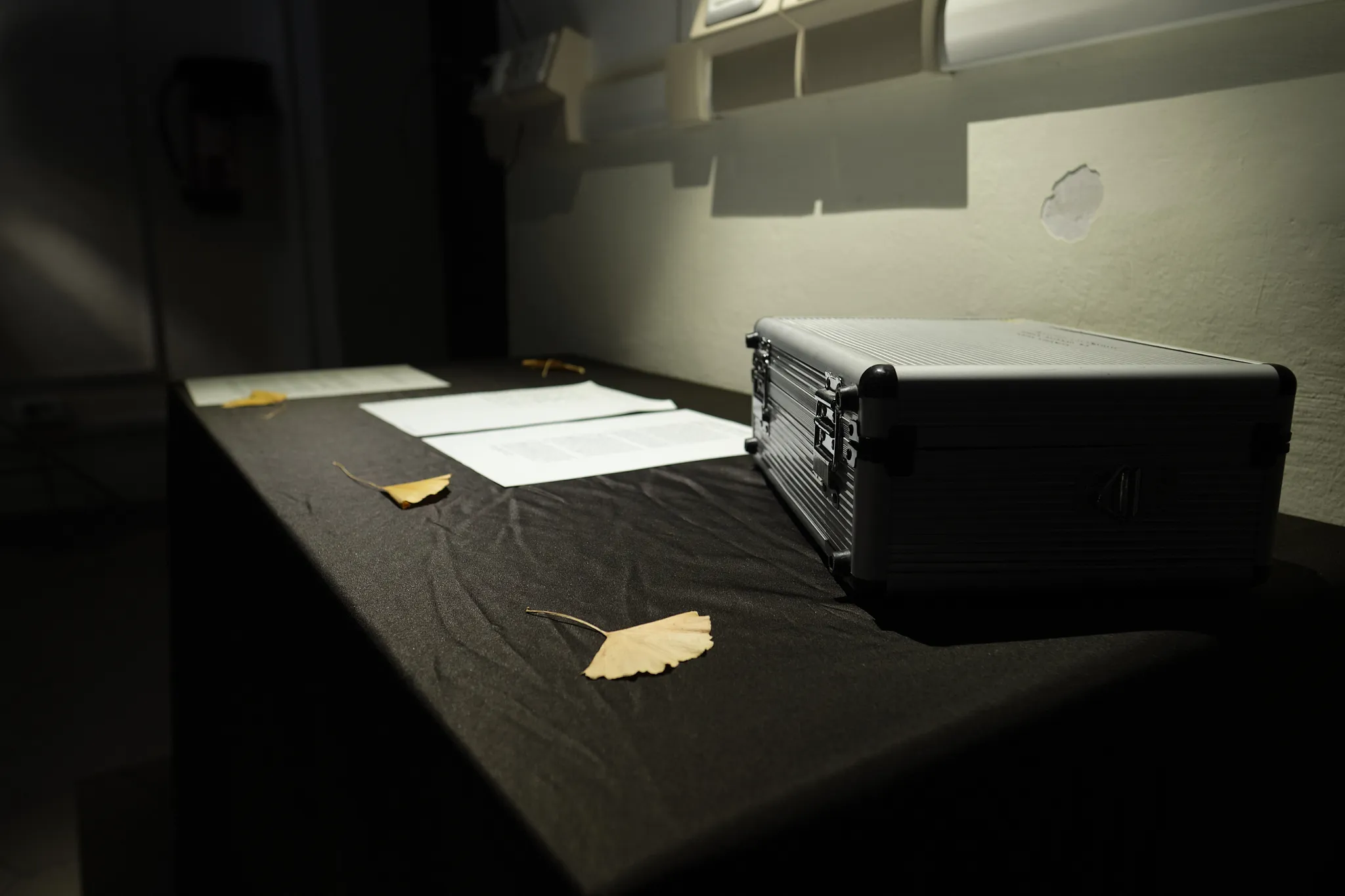A monumental skull watches the visitors, following them with its gaze as they cross the museum’s threshold. The pirate’s skull, Damien Hirst’s diamond skull, the skull as a symbol of death, the skull of the Venetian mask, the dancing skull—Mexican and Tibetan—the skull of fear and horror, the skull printed on teenagers’ t-shirts, the tattooed skull, the memento skull, Hamlet’s skull, and the interactive skull…
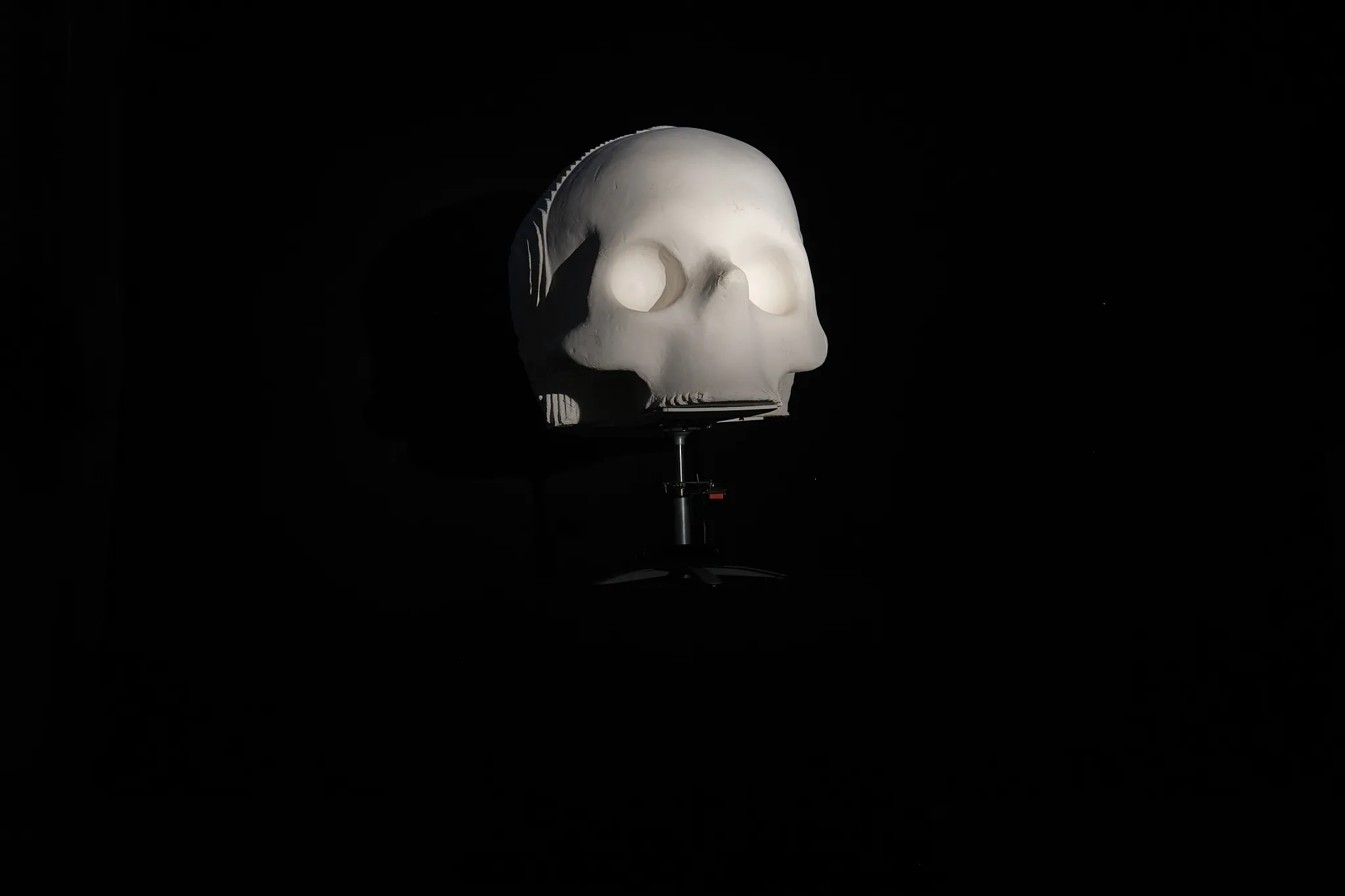
Our collective imagination fills itself with the image of the skull (just like those of the heart, the zombie, or the robot), makes it “likeable,” deconstructs it, analyzes it, and spreads it as an amulet, a sign, a symbol of superiority over the injustices and trivialities of earthly life—over pain and over life’s very madness—as a mirror of contemporary existence. The living skull alludes to everything that looks at us pitilessly, coldly, and at the same time plays with us, impersonating a “little Big Brother” that no longer frightens us; on the contrary, it flatters us, allowing us to see things from its own point of view.
The restoration was carried out as a thesis project within the Academy of Fine Arts of Carrara. The original work was created by Massimo Cittadini, Massimiliano Menconi, Marco Ambrosini, Chiara Mastrini, Andrea Camillo Nepori, Jessner Passarella, and Francesca Tognoni. The original artwork was exhibited in 2013 at the Marble Museum (Carrara).
